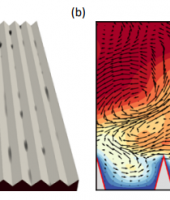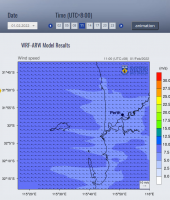Analysis of repetitive elements in the pathogenesis of neurodegenerative diseases
Our project aims to characterise complex genetic variation in the genomes of individuals with neurodegenerative disease, such as Parkinson's and motor neuron disease (MND). The risk of developing Parkinson's disease and MND have a genetic component, however a large proportion of these genetic risk factors remain to be identified. Using large datasets of individuals with and without these diseases we study a type of genetic feature called mobile DNA to identify novel genetic risk factors. Understanding those factors that contribute to an individual developing a neurodegenerative disorder can help identify pathways involved in disease development and targets for novel therapeutics
Area of science
Genomics
Systems used
magnus, Zeus and Managed Storage
Applications used
bwa, samtools, bcftools, picard, fastqc, delly, MELT, GATK, HipSTR, vcftools, trimmomatic, L1EM, python,The Challenge
The majority of large scale genetic studies focus on small variants, such as single nucleotide polymorphisms, that are easier to study. Analysing genetic variants generated by mobile DNA requires specialist software tools and whole genome sequencing data with validation in the laboratory, therefore is not routinely addressed. Mobile DNA variants are known to cause disease and effect cellular function so are an important part of the genome to be characterised.
The Solution
To address the problem of the unknown genetic factors involved in Parkinson’s disease and MND we are evaluating mobile DNA variants in individuals with and without disease and investigating the functional consequences of them. To do this we have collated large DNA and RNA sequencing datasets from the same individuals. This includes data from large consortia and data generated through our research group here in Perth. We have tested and are implementing a range of computational pipelines that have been developed to characterise mobile DNA variants from sequencing data. We can then investigate these variants for their contribution to disease risk and progression and in conjunction with the RNA sequencing data investigate their functional impact. We have characterised nearly 20000 variable mobile DNA elements in the genomes analysed and identified several involved in the progression of Parkinson’s disease so far.
The Outcome
The Pawsey Centre’s resources enable us to store and analyse the extensive datasets we have available. We have over 1500 whole genomes and over 8000 transcriptomes that have required 300TB of storage. To analyse this data we also require large amount of temporary storage for our pipelines. The compute infrastructure allows us to analyse samples simultaneously and on a large scale. This enables us to analyse a large number of individuals for many different genetic variants so we can comprehensively address our research questions
List of Publications
Pfaff AL, Bubb VJ, Quinn JP, Koks S. Reference SVA insertion polymorphisms are associated with Parkinson’s Disease progression and differential gene expression. NPJ Parkinsons Dis. 2021;7(1):44.
2) Pfaff, A. L., V. J. Bubb, J. P. Quinn and S. Koks (2020). “An Increased Burden of Highly Active Retrotransposition Competent L1s Is Associated with Parkinson’s Disease Risk and Progression in the PPMI Cohort.” Int J Mol Sci 21(18).
3) Koks S, Pfaff AL, Bubb VJ, Quinn JP. Expression Quantitative Trait Loci
(eQTLs) Associated with Retrotransposons Demonstrate their Modulatory Effect on the Transcriptome. Int JMol Sci. 2021;22(12)
Book chapter in press: Analysis of the retrotransposon SINE-VNTR-Alu (SVA) polymorphisms in the geneticsand pathophysiology of complex diseases, Kõks S, Singleton L, Quinn JP, Bubb VJ and Pfaff AL
Manuscript submitted: Locus specific reduction of L1 expression in the cortices of individuals with Amyotrophic Lateral Sclerosis, Pfaff AL, Bubb VJ, Quinn JP, Koks S





